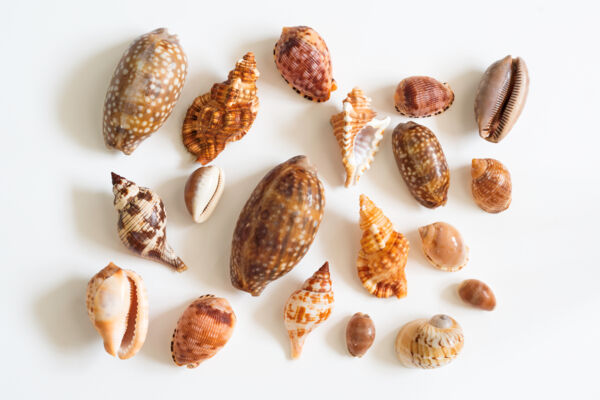Turks and Caicos Seashell Identification

The spectacular beaches of the Turks and Caicos hide a wide array of beautiful and intricate seashells. Unfortunately, many of the best beachcombing sites tend to be far from the country’s popular beaches.
On the island of Providenciales, Grace Bay Beach, Leeward Beach, the Bight Beach, and the snorkeling sites of Smith’s Reef and the Bight Reef are part of the Princess Alexandra National Park, where it’s illegal to take any natural object or historical artifact.
Shelling
On the sandy beaches in the Turks and Caicos, bivalves such as cockle (especially the glossy white egg cockle), scallop, wing, ark, and lucine shells are the most common finds. The calico scallop and zebra ark (Arca zebra) tend to be the most colorful of these plentiful bivalves. The small milk moon shell, lettered olive, and bubble shells are likewise typical finds.
When shelling, it’s important to consider how a coast is exposed to the swell and rough ocean conditions. In the Turks and Caicos, fragile species such as worm shells, tuns, and murex shells often don’t survive in one piece on the rocky coasts. The exposed coasts are, however, great places to see small bits of coral.
Some of the larger finds include a collection of conchs, including the ever-popular queen conch, king helmet, Triton’s trumpet (which by length is the largest shell found in Turks and Caicos waters), and horse conch. Sea stars (starfish) are found throughout the Turks and Caicos, yet it’s uncommon to find examples washed ashore that can be collected.
How Local Shelling Differs from Florida
The Turks and Caicos does share quite a bit of commonality of species with Florida, the Gulf of Mexico, and popular Florida Cays destinations such as Sanibel Island.
Whelk shells are notably uncommon in the Turks and Caicos, as are the larger scallops, clams, and lion paw shells.

Triton and Murex Shells

Cowrie Shells

Tulip, Star, Natica, and Tun Shells

Bivalves, Tellins, and Scallops

Small Conchs

Small Shells




